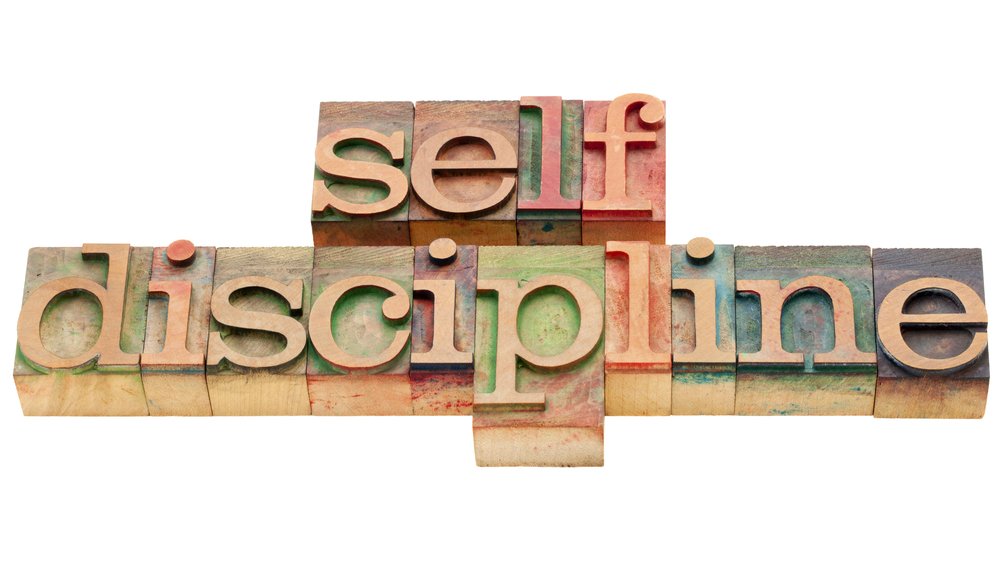Goal achievement is crucial for personal and professional growth. Goals provide direction, motivation, and a clear sense of purpose. The journey towards goal achievement often requires structured approaches and disciplined efforts.
In this article, you will discover five proven strategies to help you reach your dreams:
- Setting SMART Goals
- Creating an Action Plan
- Developing Self-Discipline
- Eliminating Distractions
- Accountability and Reflection
These strategies offer practical steps to ensure your aspirations are not just dreams but attainable realities.

Understanding Goal Achievement
Goal achievement refers to the process of identifying specific objectives and taking deliberate steps to accomplish them. It’s a structured approach where you set targets, devise plans, and work consistently towards meeting those targets.
Psychological Benefits of Goal Achievement
- Boosts Confidence: Accomplishing goals enhances self-esteem and self-efficacy, reinforcing the belief in your capabilities.
- Reduces Anxiety: Having clear goals can reduce uncertainty, leading to decreased stress and anxiety.
- Increases Happiness: Achieving meaningful goals contributes to overall life satisfaction and happiness.
The Role of Motivation in Reaching Goals
Motivation acts as the driving force behind goal pursuit. It can be intrinsic, driven by personal satisfaction, or extrinsic, fueled by external rewards.
Consider these elements:
- Intrinsic Motivation: Engaging in activities for pure enjoyment or personal challenge.
- Extrinsic Motivation: Working towards goals due to external rewards like praise, money, or recognition.
Understanding these aspects helps you leverage motivation effectively, ensuring sustained effort towards achieving success.
Strategy 1: Setting SMART Goals
Setting SMART goals is a fundamental strategy for achieving your dreams. The SMART framework ensures that your goals are:
- Specific: Clearly define what you want to achieve. Instead of saying “I want to get fit,” specify “I want to lose 10 pounds in three months by exercising three times a week.”
- Measurable: Include criteria for measuring progress. This could mean tracking weight loss, counting workout sessions, or monitoring dietary changes.
- Attainable: Ensure that the goal is realistic and within your reach. Setting a goal to lose 50 pounds in one month is not practical, but aiming for 10 pounds over three months is more achievable.
- Relevant: Align the goal with your broader objectives. If improving overall health is your aim, focus on fitness and nutrition rather than unrelated areas.
- Time-bound: Set a deadline to create a sense of urgency. For example, “I will lose 10 pounds by December 31st.”
Clarity in goal-setting is crucial. A vague goal like “I want to be successful” lacks direction and measurability. In contrast, a SMART goal provides a roadmap for success.
Examples of SMART vs. Vague Goals
- Vague Goal: “I want to save money.”
- SMART Goal: “I will save $5,000 over the next year by setting aside $100 from each paycheck.”
By adopting the SMART framework, you transform vague aspirations into clear, actionable plans that pave the way for tangible achievements.
Strategy 2: Creating an Action Plan

Creating an effective action plan is essential for achieving your goals. This strategy begins with defining your end goal clearly. Knowing precisely what you aim to achieve sets the foundation for your action plan.
Components of an Effective Action Plan
- Defining the End Goal
- Listing Steps to Achieve Goals
- Prioritizing Tasks
- Setting Milestones
1. Defining the End Goal
- Clarify what success looks like.
- Ensure it aligns with your long-term objectives.
2. Listing Steps to Achieve Goals
- Break down the end goal into smaller, manageable tasks.
- Each task should be specific and actionable.
3. Prioritizing Tasks
- Identify which tasks are most critical.
- Focus on high-impact activities that drive you closer to your goal.
4. Setting Milestones
- Establish short-term targets that serve as checkpoints.
- These milestones help track progress and maintain motivation.
Example:
End Goal: Launch a personal blog within six months.
Steps to Achieve Goals:
- Research blogging platforms (Week 1)
- Select a niche (Week 2)
- Create content calendar (Month 1)
- Write and schedule initial posts (Months 2-3)
- Design website layout (Month 4)
- Promote blog on social media (Month 5)
Prioritizing Tasks:
- Focus on content creation before design aspects.
- Prioritize research and planning in the initial weeks.
Setting Milestones:
- Have at least ten posts written by Month 3.
- Website live by Month 4.
An action plan helps you stay organized and focused, ensuring each step brings you closer to achieving your goals. By prioritizing tasks and setting milestones, you create a structured path towards success.
Strategy 3: Developing Self-Discipline
Self-discipline is essential for achieving goals. It acts as the driving force that keeps you on track, even when motivation wanes. Building self-discipline requires commitment to healthy routines and consistent habits.

Tips for Building Healthy Routines:
- Consistent Sleep Patterns: A regular sleep schedule improves cognitive function, mood, and energy levels. Aim for 7-9 hours of sleep each night to ensure you are well-rested and ready to tackle your goals.
- Regular Exercise: Physical activity enhances focus and reduces stress. Incorporate at least 30 minutes of exercise into your daily routine, whether it’s a morning jog, yoga session, or a workout at the gym.
Benefits of Self-Discipline:
- Enhanced Focus: Self-discipline helps maintain concentration on tasks by minimizing distractions and procrastination.
- Stress Reduction: Healthy routines provide structure, reducing anxiety and helping you manage time more effectively.
- Improved Productivity: Consistent habits lead to increased efficiency in completing tasks, bringing you closer to your goals.
“Discipline is the bridge between goals and accomplishment.” – Jim Rohn
Implementing these tips can strengthen your self-discipline, making it easier to stay committed to your objectives and ultimately achieve your dreams.
Strategy 4: Eliminating Distractions
Distractions can significantly hinder productivity and derail your progress towards achieving goals. Identifying common distractions in daily life is the first step.
Common Distractions:
- Digital Interruptions: Frequent notifications from social media, emails, and messaging apps.
- Environmental Factors: Noisy surroundings, cluttered workspaces, and household interruptions.
- Multitasking: Trying to juggle multiple tasks simultaneously can reduce efficiency.
Techniques for Minimizing Distractions:
Silencing Notifications:
- Use ‘Do Not Disturb’ modes on your devices during work hours.
- Consider app blockers that limit access to distracting applications.
Creating a Conducive Environment:
- Set up a dedicated workspace free from unnecessary clutter.
- Use noise-canceling headphones or play background music to drown out external noise.
Time Management Strategies:
- Implement techniques like the Pomodoro Technique, where you work in focused intervals with short breaks.
- Schedule specific times for checking emails or social media to avoid constant interruptions.
Prioritizing Tasks:
- Create a daily to-do list prioritizing the most critical tasks.
- Focus on one task at a time to maintain quality and efficiency.
By actively managing distractions, you create an environment conducive to productivity and maintain focus on your goals. This proactive approach enables you to allocate your energy effectively towards goal achievement.
Strategy 5: Accountability and Reflection
Accountability plays a crucial role in ensuring you stay on track with your goals. Holding yourself accountable means regularly checking in on your progress and making necessary adjustments. This practice can prevent procrastination and foster a sense of responsibility.
Self-reflection is equally important. Taking the time to evaluate your actions and decisions helps identify what works and what doesn’t. When you reflect, you’re able to pinpoint areas for improvement and celebrate milestones.
Learning from failures is an integral part of goal achievement. Accepting setbacks as learning opportunities rather than defeats can drastically change your perspective. Each failure provides valuable insights that can be used to refine your strategies.
Here’s how to integrate accountability and reflection into your routine:
- Set regular check-ins: Schedule weekly or monthly reviews of your progress.
- Document your journey: Keep a journal to note down successes, challenges, and lessons learned.
- Seek external accountability: Share your goals with a friend or mentor who can provide support and feedback.
By embracing accountability, self-reflection, and learning from failures, you create a cycle of continuous improvement, bringing you ever closer to achieving your dreams.
Additional Strategies for Goal Achievement
Finding daily inspiration can significantly affect your motivation and drive towards achieving goals. Incorporating sources of inspiration, such as motivational quotes, books, or talks into your routine can maintain enthusiasm. Consider starting your day with an inspiring quote or listening to a motivational speaker during your commute. This can set a positive tone and keep you focused on your objectives.
Resource assessment is another crucial aspect of goal achievement. It’s vital to understand what resources are available to you and identify any potential challenges. This involves:
- Identifying Resources: List all the tools, skills, and support systems you have at your disposal. This could include educational materials, technology, mentors, or financial resources.
- Assessing Potential Challenges: Recognize any obstacles that might hinder your progress. These could be time constraints, lack of knowledge, or external factors like market conditions.
By continuously seeking inspiration and effectively assessing your resources, you create a supportive environment for reaching your goals. This dual approach helps in maintaining motivation while being prepared for any hurdles along the way.

Planning Effectively for Goal Achievement
Effective planning for goals requires expecting obstacles that may arise during the goal pursuit process. Identifying potential challenges allows you to develop proactive strategies, ensuring you stay on track no matter what comes your way.
Key Steps to Anticipate Obstacles:
- Identify Potential Challenges: Consider what has hindered you in the past or what could potentially disrupt your progress.
- Evaluate Risks: Assess the likelihood and impact of each identified obstacle.
- Prioritize Challenges: Focus on the most probable and impactful obstacles first.
Goal Achievement and Contingency Plans:
Having contingency plans is essential to navigate unexpected hurdles seamlessly. Here’s how:
- Brainstorm Solutions: For each identified challenge, list possible solutions or alternative approaches.
- Create Backup Plans: Develop specific backup plans that can be implemented quickly if an anticipated obstacle occurs.
- Stay Flexible: Be prepared to adapt your strategies as new challenges emerge.
By incorporating these steps into your planning process, you create a robust framework that supports consistent progress towards your goals.
The Link Between Goal Achievement and Mindset
The Role of Mindset in Goal Achievement
Your mindset plays a crucial role in goal achievement. A growth mindset, characterized by a belief in your ability to learn and grow, can help you navigate obstacles with resilience and perseverance. Here’s how it impacts your journey:
Key Characteristics of a Growth Mindset
- Embracing Challenges: Instead of shying away from difficulties, view them as opportunities to enhance your skills. Each challenge you face can foster growth and improvement.
- Learning from Setbacks: When you encounter setbacks, consider them as valuable learning experiences. Analyze what went wrong and identify ways to prevent similar issues in the future.
- Maintaining a Positive Attitude: Cultivating optimism allows you to stay motivated even when progress seems slow. A positive outlook encourages creative problem-solving and keeps you focused on your goals.
Strategies to Develop a Growth Mindset
- Practice Self-Reflection: Regularly reflect on your experiences, successes, and failures. This helps identify patterns in your behavior and areas for improvement.
- Seek Feedback: Constructive criticism is essential for growth. Welcome feedback from peers or mentors to gain different perspectives on your performance.
- Set Incremental Goals: Break down larger objectives into smaller, manageable milestones. Achieving these smaller goals boosts confidence and reinforces the belief that progress is possible.
“The path to success is rarely linear.”
Remember, with a proactive approach and a resilient mindset, you can overcome any obstacle that comes your way. Continuous self-improvement not only enhances your skill set but also builds a robust mental framework that supports enduring success.
Conclusion
Implementing these strategies in your daily life can pave the way for successful goal achievement.
By setting SMART goals, creating a detailed action plan, developing self-discipline, eliminating distractions, managing your mind, and holding yourself accountable, you equip yourself with the tools needed to reach your dreams.
Perseverance plays a crucial role in this journey. Obstacles and setbacks are inevitable, but maintaining a commitment to goals ensures you keep moving forward. Embrace each challenge as a learning experience and stay inspired by your progress.
Remember, achieving dreams requires consistent effort and dedication. Stay focused, adapt when necessary, and celebrate each milestone on your path to success.




